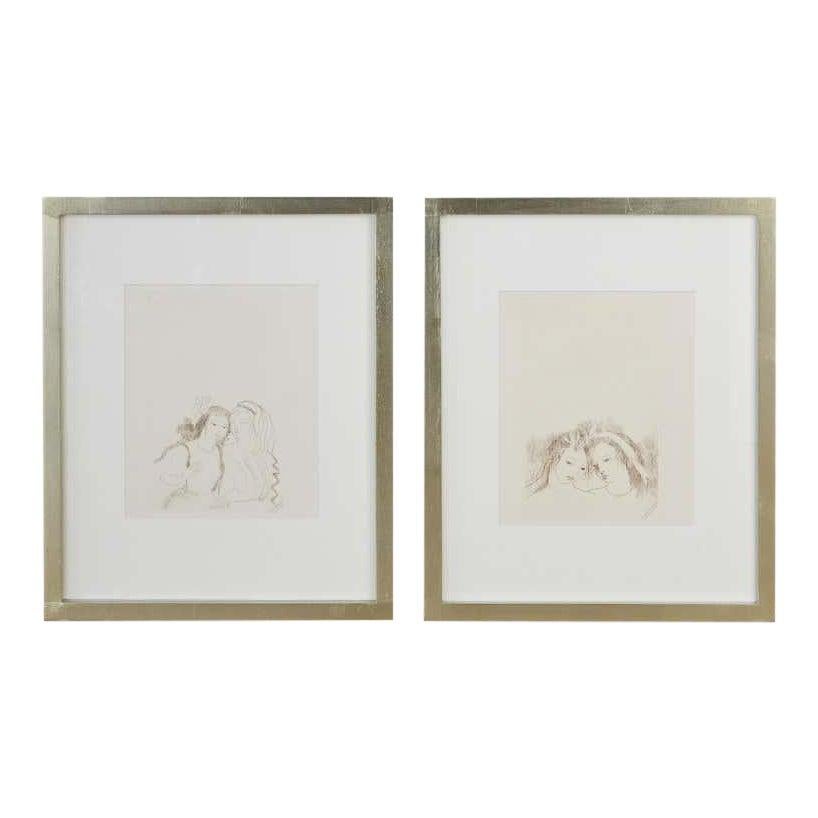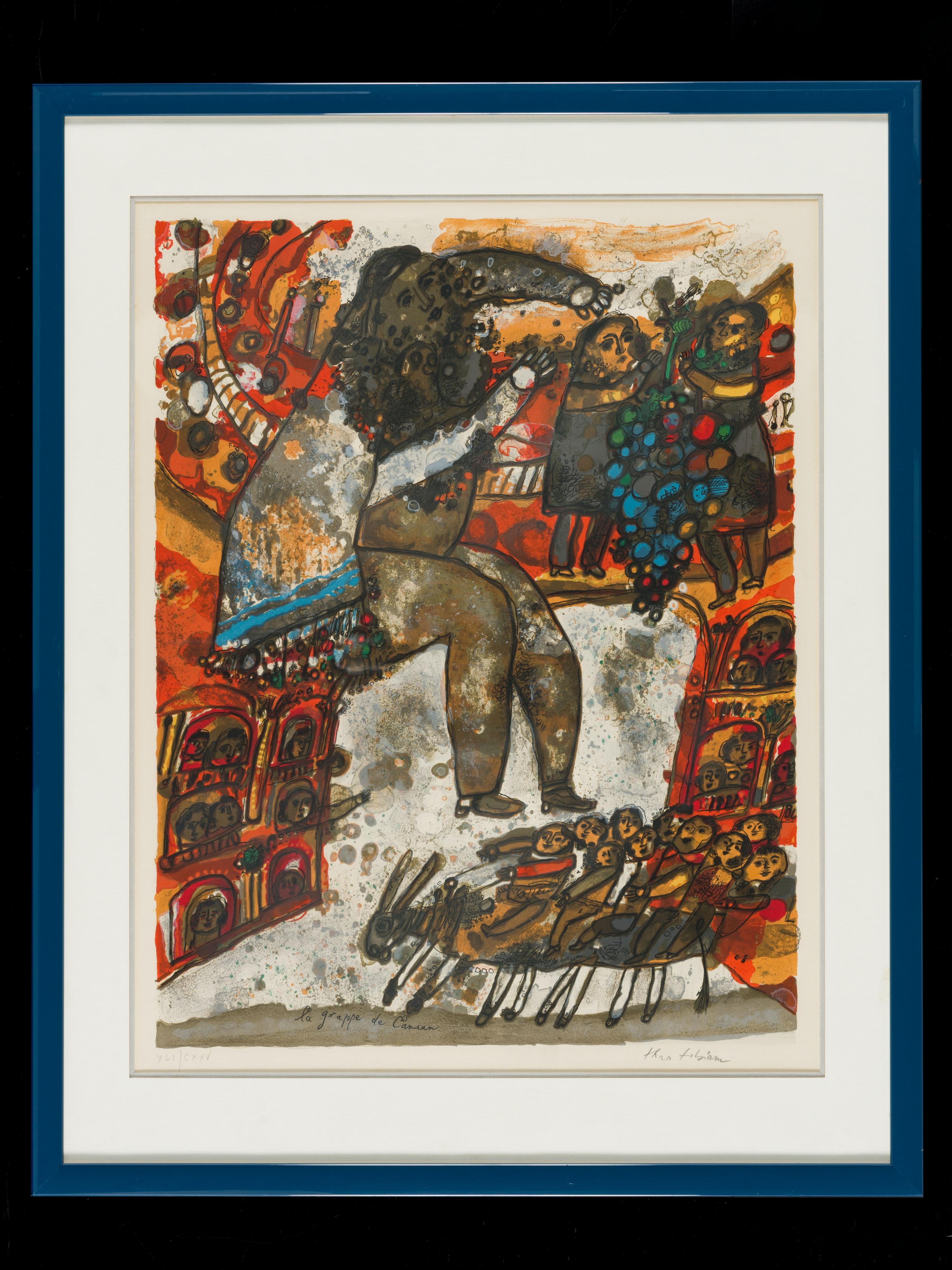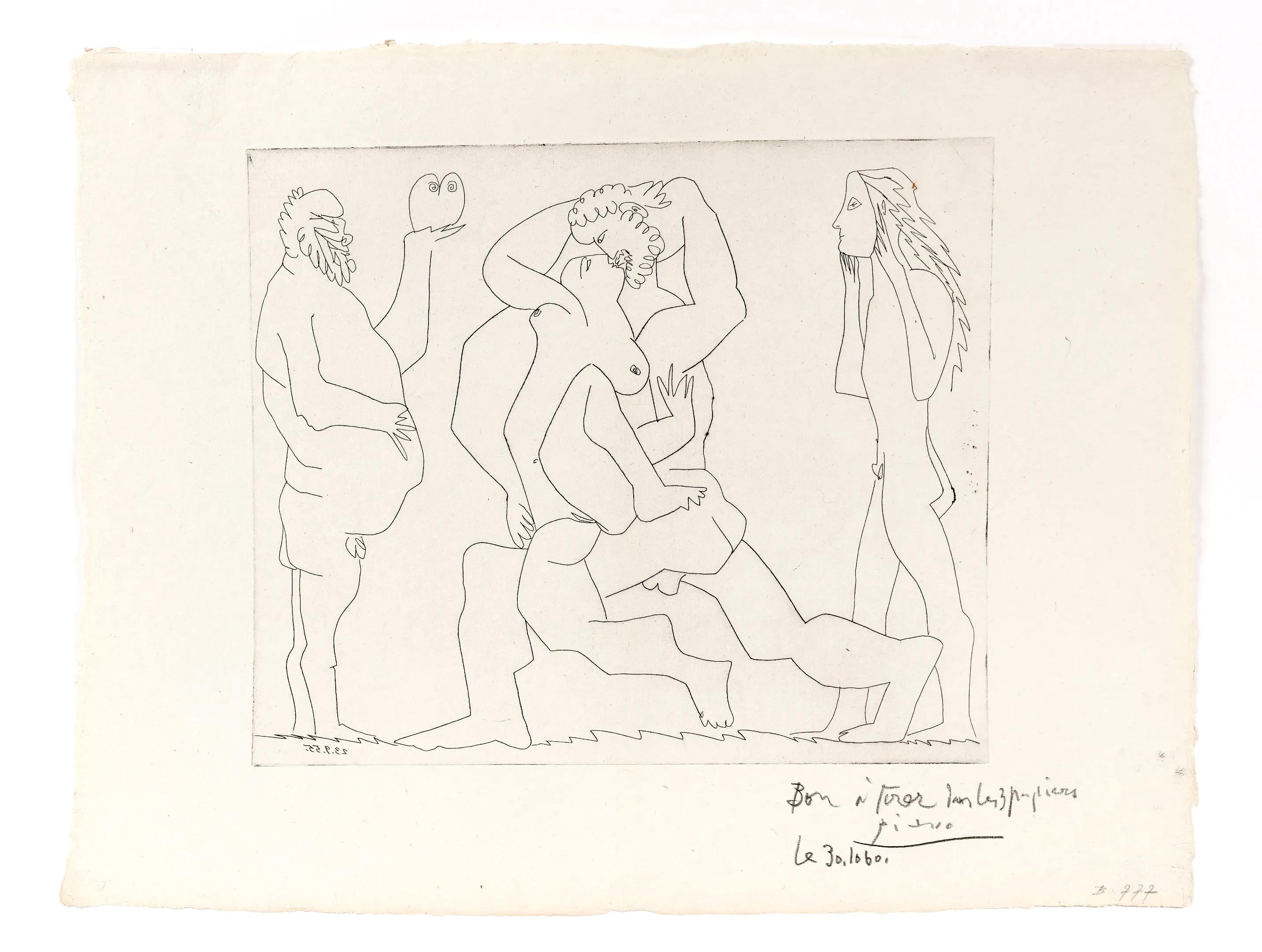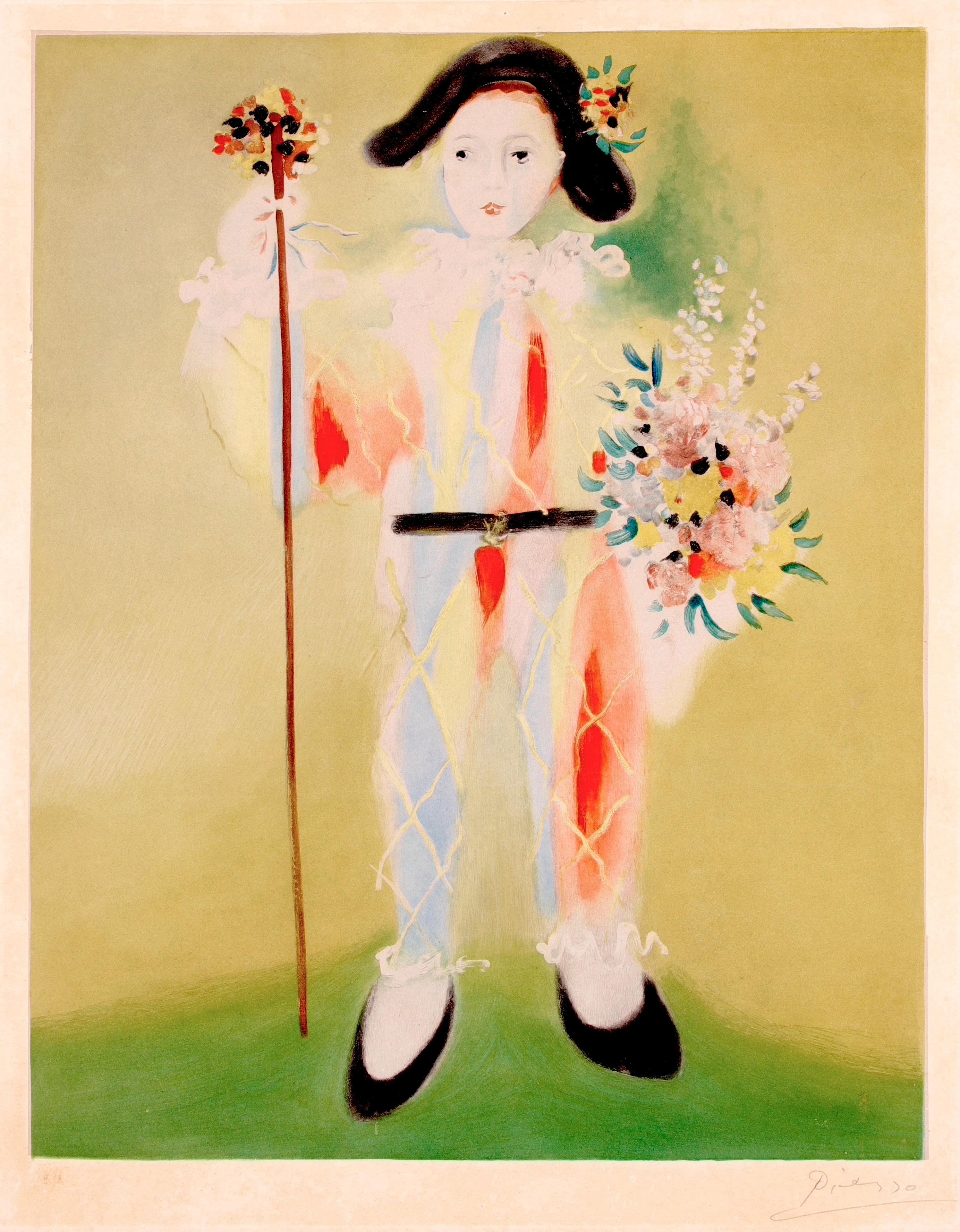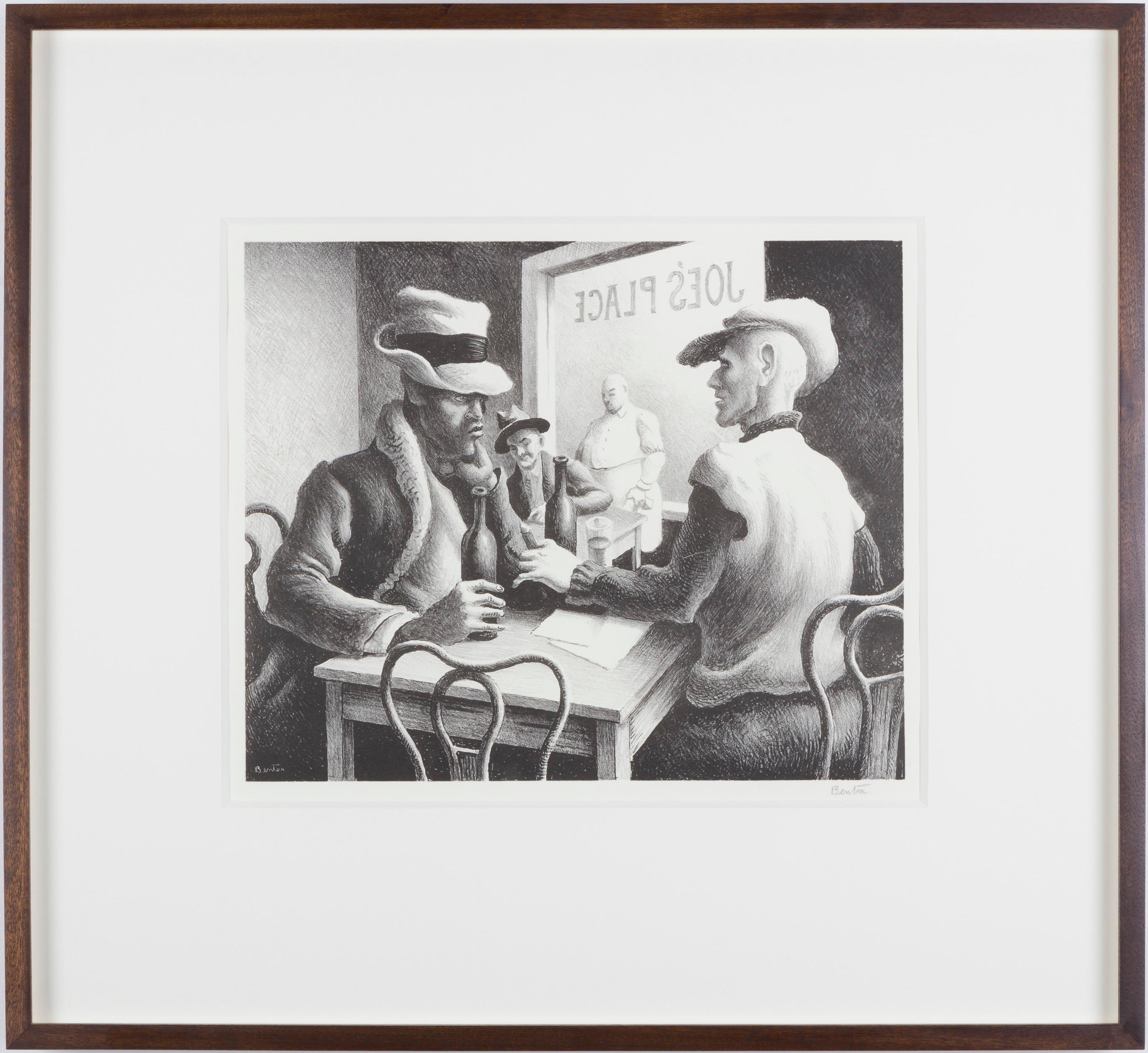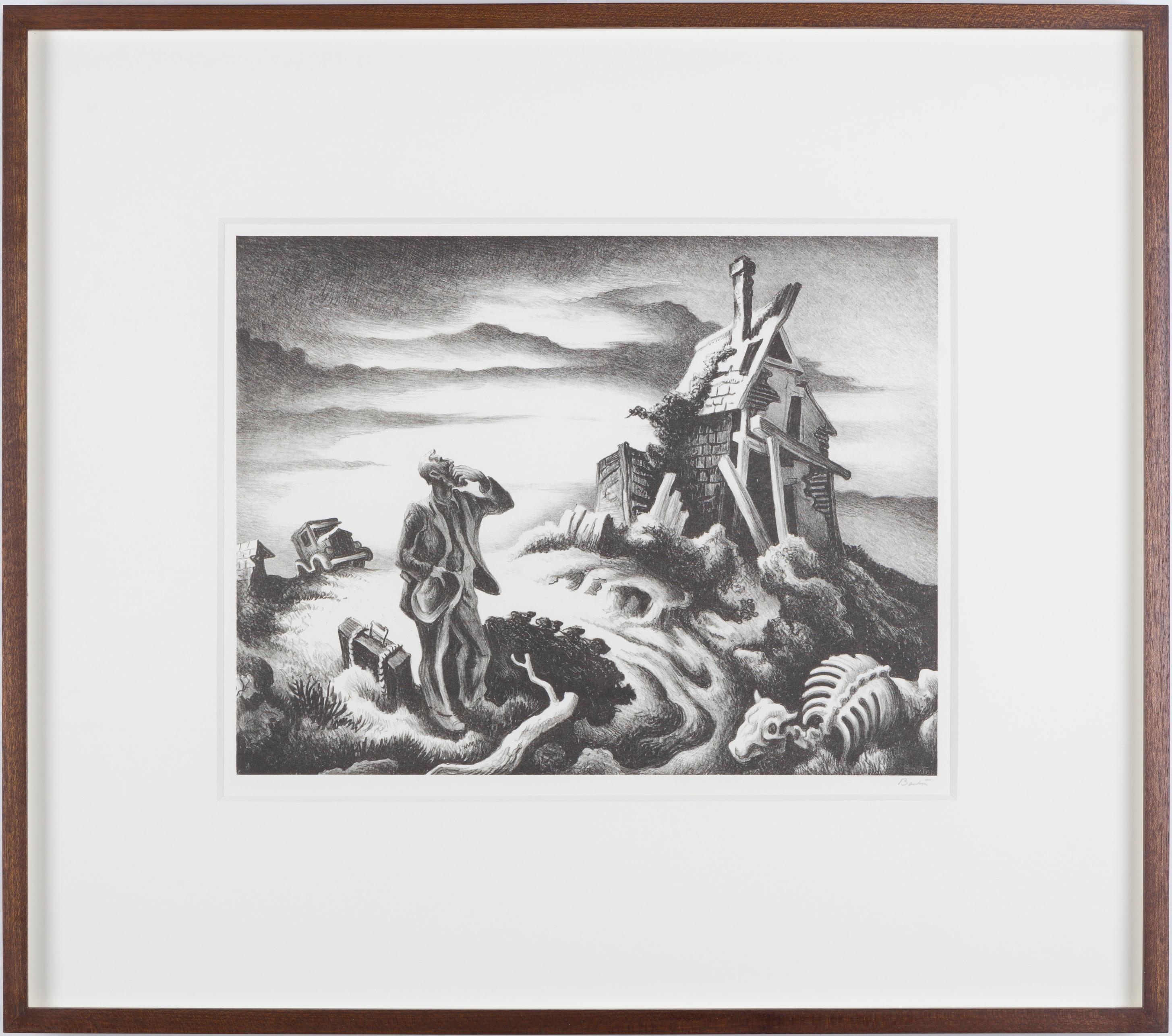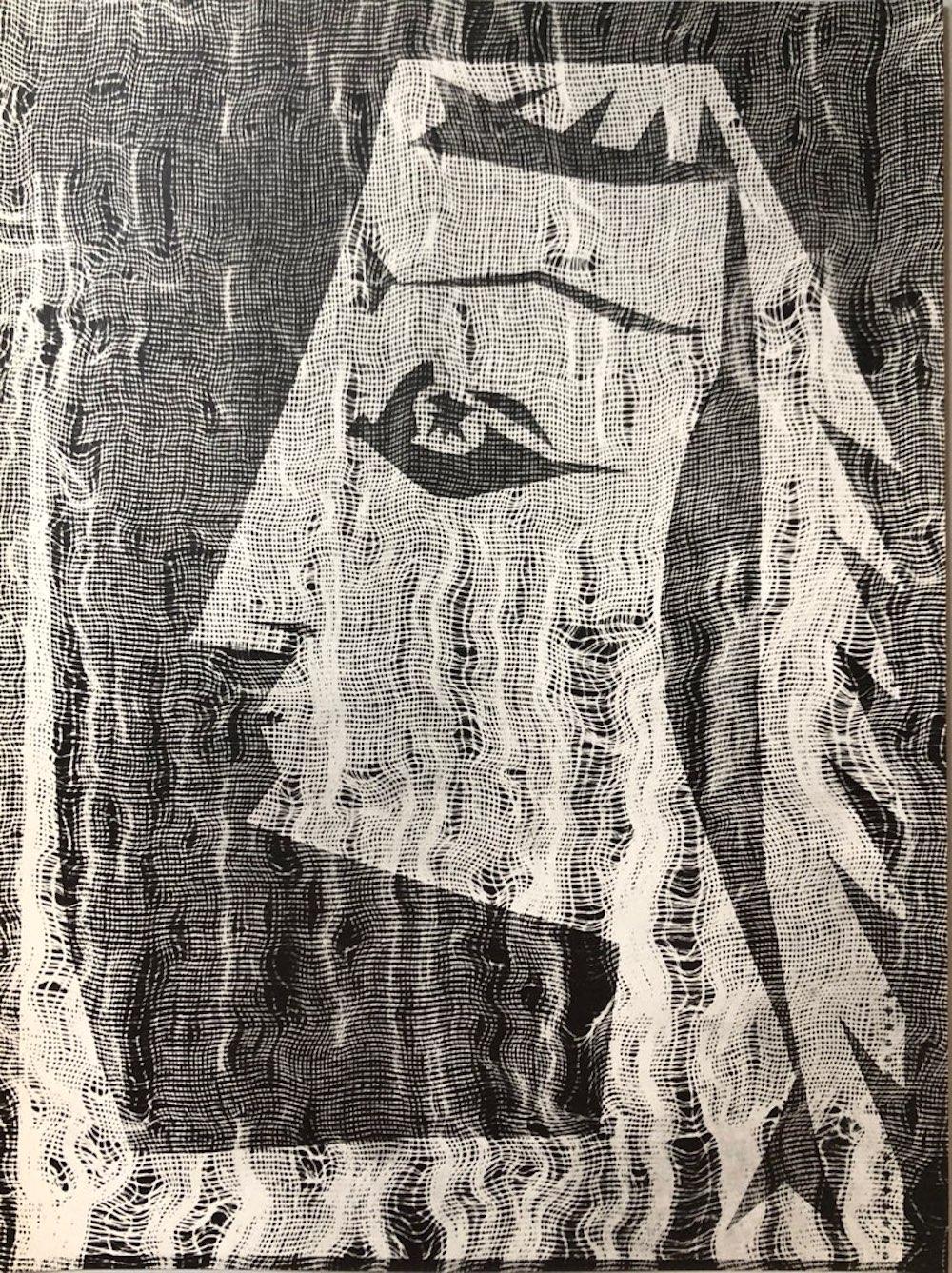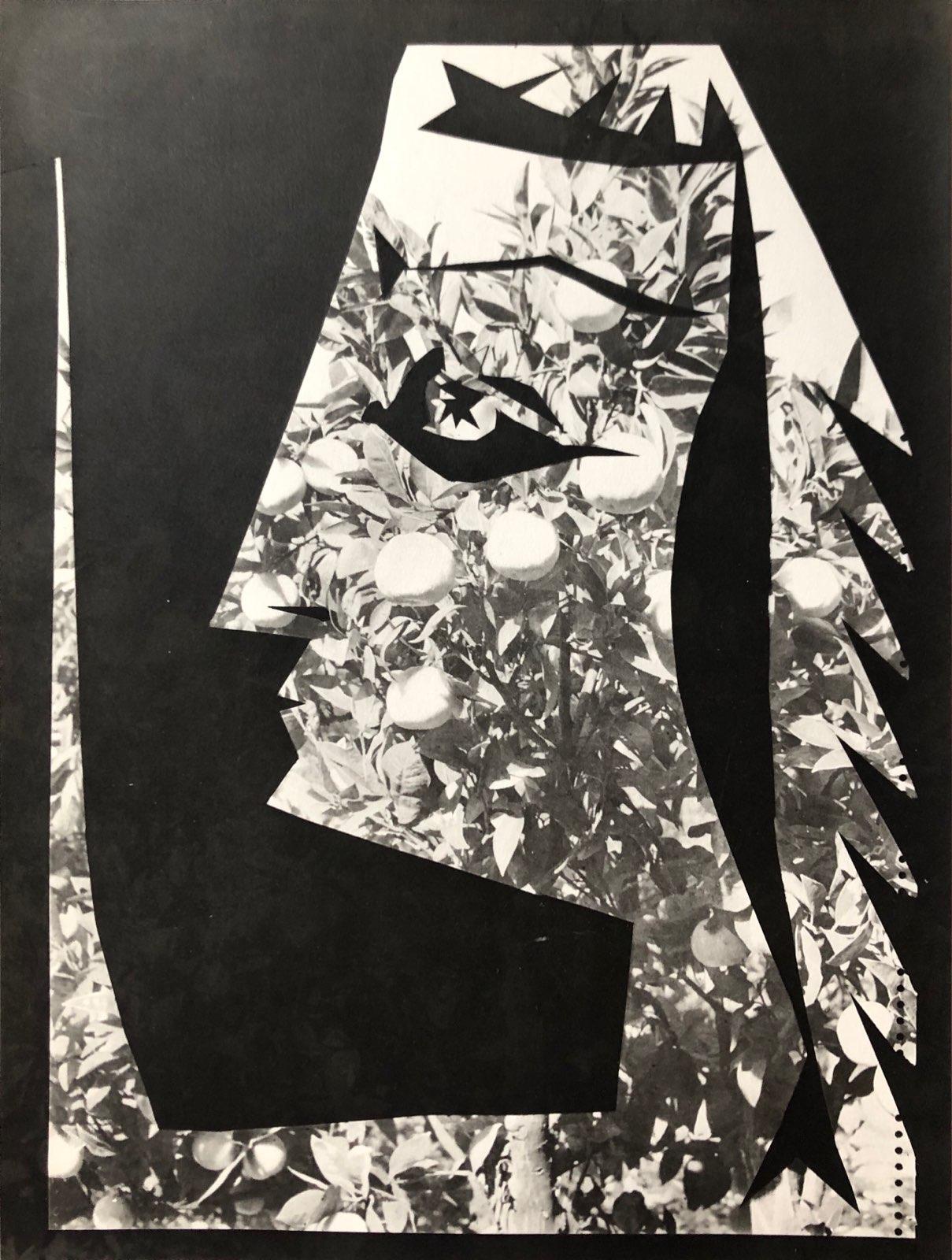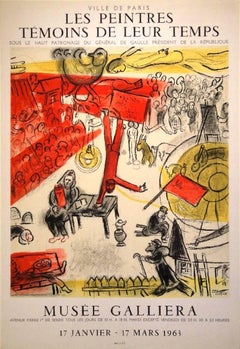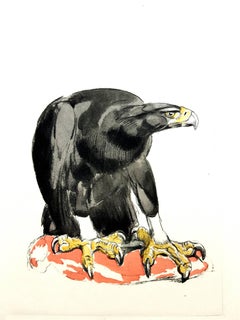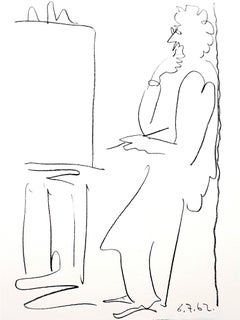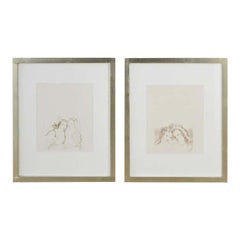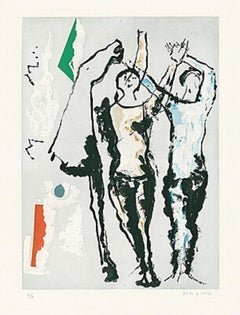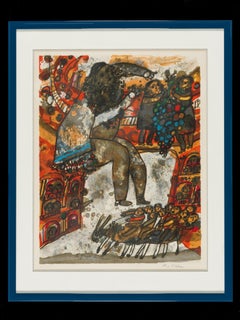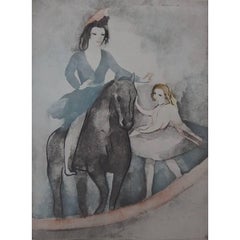
After Marie Laurencin - Dialogue sur la Danse - Original Etching
View Similar Items
Marie LaurencinAfter Marie Laurencin - Dialogue sur la Danse - Original Etching
About the Item
- Creator:Marie Laurencin (1883-1956, French)
- Dimensions:Height: 14.97 in (38 cm)Width: 11.03 in (28 cm)Depth: 0.04 in (1 mm)
- Movement & Style:
- Period:
- Condition:
- Gallery Location:Collonge Bellerive, Geneve, CH
- Reference Number:1stDibs: LU1612915123
Marie Laurencin
Artist Marie Laurencin is best known for her enchanting portraits of women and young girls. The Parisian artist was linked to the avant-garde Cubist movement, but she endeavored to disassociate herself from the style as she instead drew on the Impressionist style of Pierre-Auguste Renoir in her paintings and prints, and created poetic, overtly sensual images of women in Fauvism’s subdued pastels at a time when the leagues of male artists around her became famous for making still lifes.
Just as Renoir and other painters began their careers painting pottery in Limoges, Laurencin trained in porcelain painting in the southwestern suburbs of Paris before she studied oil painting at Académie Humbert alongside influential Cubist painter Georges Braque and French designer and painter Francis Picabia. Her circle consisted of widely known and reputable artists including Braque and Pablo Picasso, with whom she exhibited. Her romantic partners were both male and female over the years, and she repeatedly refused marriage proposals from the most famous art dealer at the time, Sir Joseph Duveen, Baronet. Laurencin had a romantic relationship with French poet Guillaume Apollinaire that lasted six years.
Laurencin produced most of her best known work throughout the 1920s. During this era, she worked with art dealer Paul Rosenberg although she frequently ignored his business advice. Known to only paint children she liked, Laurencin also charged men twice that of women, as well as brunettes more than blondes, and offered discounts for works she enjoyed doing and steeper prices for those she cared less for.
Laurencin’s work increasingly attracted attention over time — she had more than ten solo exhibitions in 1939 alone and was commissioned for portraits by the likes of Jean Cocteau and Coco Chanel. (Revered fashion designer Karl Lagerfeld — who consistently displayed a knack for synthesizing old and new, high and low — drew on the work of Laurencin in his Spring/Summer 2011 collection for Chanel.)
Laurencin’s six illustrations of "Alice" in a 1930 edition of Lewis Carroll's Alice in Wonderland comprise a small sample of the art she made that is held in the public collection of the Museum of Modern Art. Her works are also held in the collections of the Metropolitan Museum of Art, the Musée d’Orsay and the National Museum of Women in the Arts. In 1983, a museum opened in her honor — the Musée Marie Laurencin in Nagano, Japan. At the time, it was the only museum in the world to focus solely on a female painter.
Find original Marie Laurencin paintings and prints on 1stDibs.
- Marc Chagall - Revolution - Original 1960s Poster for Galiera MuseumBy Marc ChagallLocated in Collonge Bellerive, Geneve, CHafter Marc CHAGALL (1887 - 1985) Poster for "Les peintres témoins de leur temps Musée Galiera" 1963 Created by Charles Sorlier after Chagall's 1937 painting...Category
1960s Modern Figurative Prints
- Paul Jouve - Eagle - Original EngravingBy Paul JouveLocated in Collonge Bellerive, Geneve, CHPaul Jouve - Eagle - Original Engraving Editions Rombaldi, Paris, 1950. Copy on velin creme de Rives Artwork by Paul Jouve. Original copper engraving heightened with pochoir. Paul...Category
1950s Modern Animal Prints
MaterialsEngraving
- Pablo Picasso - The Painter - Original LithographBy Pablo PicassoLocated in Collonge Bellerive, Geneve, CHPablo Picasso - Original Lithograph Title: Painter and his Model From the illustrated book "Regards sur Paris" (Paris: André Sauret, 1962) Edition of 180 Individual prints were not s...Category
1960s Modern Portrait Prints
MaterialsLithograph
- Marc Chagall - Moses with Tablets of Stone - Original LithographBy Marc ChagallLocated in Collonge Bellerive, Geneve, CHMarc Chagall, Original Lithograph depicting an instant of the Bible. Technique: Original lithograph in colours Year: 1956 Sizes: 35,5 x 26 cm / 14" x 10.2" (sheet) Published by: Éditions de la Revue Verve, Tériade, Paris Printed by: Atelier Mourlot, Paris Documentation / References: Mourlot, F., Chagall Lithograph [II] 1957-1962, A. Sauret, Monte Carlo 1963, nos. 234 and 257 Marc Chagall (born in 1887) Marc Chagall was born in Belarus in 1887 and developed an early interest in art. After studying painting, in 1907 he left Russia for Paris, where he lived in an artist colony on the city’s outskirts. Fusing his own personal, dreamlike imagery with hints of the fauvism and cubism popular in France at the time, Chagall created his most lasting work—including I and the Village (1911)—some of which would be featured in the Salon des Indépendants exhibitions. After returning to Vitebsk for a visit in 1914, the outbreak of WWI trapped Chagall in Russia. He returned to France in 1923 but was forced to flee the country and Nazi persecution during WWII. Finding asylum in the U.S., Chagall became involved in set and costume design before returning to France in 1948. In his later years, he experimented with new art forms and was commissioned to produce numerous large-scale works. Chagall died in St.-Paul-de-Vence in 1985. The Village Marc Chagall was born in a small Hassidic community on the outskirts of Vitebsk, Belarus, on July 7, 1887. His father was a fishmonger, and his mother ran a small sundries shop in the village. As a child, Chagall attended the Jewish elementary school, where he studied Hebrew and the Bible, before later attending the Russian public school. He began to learn the fundamentals of drawing during this time, but perhaps more importantly, he absorbed the world around him, storing away the imagery and themes that would feature largely in most of his later work. At age 19 Chagall enrolled at a private, all-Jewish art school and began his formal education in painting, studying briefly with portrait artist Yehuda Pen. However, he left the school after several months, moving to St. Petersburg in 1907 to study at the Imperial Society for the Protection of Fine Arts. The following year, he enrolled at the Svanseva School, studying with set designer Léon Bakst, whose work had been featured in Sergei Diaghilev's Ballets Russes. This early experience would prove important to Chagall’s later career as well. Despite this formal instruction, and the widespread popularity of realism in Russia at the time, Chagall was already establishing his own personal style, which featured a more dreamlike unreality and the people, places and imagery that were close to his heart. Some examples from this period are his Window Vitebsk (1908) and My Fianceé with Black Gloves (1909), which pictured Bella Rosenfeld, to whom he had recently become engaged. The Beehive Despite his romance with Bella, in 1911 an allowance from Russian parliament member and art patron Maxim Binaver enabled Chagall to move to Paris, France. After settling briefly in the Montparnasse neighborhood, Chagall moved further afield to an artist colony known as La Ruche (“The Beehive”), where he began to work side by side with abstract painters such as Amedeo Modigliani and Fernand Léger as well as the avant-garde poet Guillaume Apollinaire. At their urging, and under the influence of the wildly popular fauvism and cubism, Chagall lightened his palette and pushed his style ever further from reality. I and the Village (1911) and Homage to Apollinaire (1912) are among his early Parisian works, widely considered to be his most successful and representative period. Though his work stood stylistically apart from his cubist contemporaries, from 1912 to 1914 Chagall exhibited several paintings at the annual Salon des Indépendants exhibition, where works by the likes of Juan Gris, Marcel Duchamp and Robert Delaunay were causing a stir in the Paris art world. Chagall’s popularity began to spread beyond La Ruche, and in May 1914 he traveled to Berlin to help organize his first solo exhibition, at Der Sturm Gallery. Chagall remained in the city until the highly acclaimed show opened that June. He then returned to Vitebsk, unaware of the fateful events to come. War, Peace and Revolution In August 1914 the outbreak of World War I precluded Chagall’s plans to return to Paris. The conflict did little to stem the flow of his creative output, however, instead merely giving him direct access to the childhood scenes so essential to his work, as seen in paintings such as Jew in Green (1914) and Over Vitebsk (1914). His paintings from this period also occasionally featured images of the war’s impact on the region, as with Wounded Soldier (1914) and Marching (1915). But despite the hardships of life during wartime, this would also prove to be a joyful period for Chagall. In July 1915 he married Bella, and she gave birth to a daughter, Ida, the following year. Their appearance in works such as Birthday (1915), Bella and Ida by the Window (1917) and several of his “Lovers” paintings give a glimpse of the island of domestic bliss that was Chagall’s amidst the chaos. To avoid military service and stay with his new family, Chagall took a position as a clerk in the Ministry of War Economy in St. Petersburg. While there he began work on his autobiography and also immersed himself in the local art scene, befriending novelist Boris Pasternak, among others. He also exhibited his work in the city and soon gained considerable recognition. That notoriety would prove important in the aftermath of the 1917 Russian Revolution when he was appointed as the Commissar of Fine Arts in Vitebsk. In his new post, Chagall undertook various projects in the region, including the 1919 founding of the Academy of the Arts. Despite these endeavors, differences among his colleagues eventually disillusioned Chagall. In 1920 he relinquished his position and moved his family to Moscow, the post-revolution capital of Russia. In Moscow, Chagall was soon commissioned to create sets and costumes for various productions at the Moscow State Yiddish...Category
1950s Modern Figurative Prints
MaterialsLithograph
- Marc Chagall - Moses - Original LithographBy Marc ChagallLocated in Collonge Bellerive, Geneve, CHMarc Chagall, Original Lithograph depicting an instant of the Bible. Technique: Original lithograph in colours Year: 1956 Sizes: 35,5 x 26 cm / 14" x 10.2" (sheet) Published by: Éditions de la Revue Verve, Tériade, Paris Printed by: Atelier Mourlot, Paris Documentation / References: Mourlot, F., Chagall Lithograph [II] 1957-1962, A. Sauret, Monte Carlo 1963, nos. 234 and 257 Marc Chagall (born in 1887) Marc Chagall was born in Belarus in 1887 and developed an early interest in art. After studying painting, in 1907 he left Russia for Paris, where he lived in an artist colony on the city’s outskirts. Fusing his own personal, dreamlike imagery with hints of the fauvism and cubism popular in France at the time, Chagall created his most lasting work—including I and the Village (1911)—some of which would be featured in the Salon des Indépendants exhibitions. After returning to Vitebsk for a visit in 1914, the outbreak of WWI trapped Chagall in Russia. He returned to France in 1923 but was forced to flee the country and Nazi persecution during WWII. Finding asylum in the U.S., Chagall became involved in set and costume design before returning to France in 1948. In his later years, he experimented with new art forms and was commissioned to produce numerous large-scale works. Chagall died in St.-Paul-de-Vence in 1985. The Village Marc Chagall was born in a small Hassidic community on the outskirts of Vitebsk, Belarus, on July 7, 1887. His father was a fishmonger, and his mother ran a small sundries shop in the village. As a child, Chagall attended the Jewish elementary school, where he studied Hebrew and the Bible, before later attending the Russian public school. He began to learn the fundamentals of drawing during this time, but perhaps more importantly, he absorbed the world around him, storing away the imagery and themes that would feature largely in most of his later work. At age 19 Chagall enrolled at a private, all-Jewish art school and began his formal education in painting, studying briefly with portrait artist Yehuda Pen. However, he left the school after several months, moving to St. Petersburg in 1907 to study at the Imperial Society for the Protection of Fine Arts. The following year, he enrolled at the Svanseva School, studying with set designer Léon Bakst, whose work had been featured in Sergei Diaghilev's Ballets Russes. This early experience would prove important to Chagall’s later career as well. Despite this formal instruction, and the widespread popularity of realism in Russia at the time, Chagall was already establishing his own personal style, which featured a more dreamlike unreality and the people, places and imagery that were close to his heart. Some examples from this period are his Window Vitebsk (1908) and My Fianceé with Black Gloves (1909), which pictured Bella Rosenfeld, to whom he had recently become engaged. The Beehive Despite his romance with Bella, in 1911 an allowance from Russian parliament member and art patron Maxim Binaver enabled Chagall to move to Paris, France. After settling briefly in the Montparnasse neighborhood, Chagall moved further afield to an artist colony known as La Ruche (“The Beehive”), where he began to work side by side with abstract painters such as Amedeo Modigliani and Fernand Léger as well as the avant-garde poet Guillaume Apollinaire. At their urging, and under the influence of the wildly popular fauvism and cubism, Chagall lightened his palette and pushed his style ever further from reality. I and the Village (1911) and Homage to Apollinaire (1912) are among his early Parisian works, widely considered to be his most successful and representative period. Though his work stood stylistically apart from his cubist contemporaries, from 1912 to 1914 Chagall exhibited several paintings at the annual Salon des Indépendants exhibition, where works by the likes of Juan Gris, Marcel Duchamp and Robert Delaunay were causing a stir in the Paris art world. Chagall’s popularity began to spread beyond La Ruche, and in May 1914 he traveled to Berlin to help organize his first solo exhibition, at Der Sturm Gallery. Chagall remained in the city until the highly acclaimed show opened that June. He then returned to Vitebsk, unaware of the fateful events to come. War, Peace and Revolution In August 1914 the outbreak of World War I precluded Chagall’s plans to return to Paris. The conflict did little to stem the flow of his creative output, however, instead merely giving him direct access to the childhood scenes so essential to his work, as seen in paintings such as Jew in Green (1914) and Over Vitebsk (1914). His paintings from this period also occasionally featured images of the war’s impact on the region, as with Wounded Soldier (1914) and Marching (1915). But despite the hardships of life during wartime, this would also prove to be a joyful period for Chagall. In July 1915 he married Bella, and she gave birth to a daughter, Ida, the following year. Their appearance in works such as Birthday (1915), Bella and Ida by the Window (1917) and several of his “Lovers” paintings give a glimpse of the island of domestic bliss that was Chagall’s amidst the chaos. To avoid military service and stay with his new family, Chagall took a position as a clerk in the Ministry of War Economy in St. Petersburg. While there he began work on his autobiography and also immersed himself in the local art scene, befriending novelist Boris Pasternak, among others. He also exhibited his work in the city and soon gained considerable recognition. That notoriety would prove important in the aftermath of the 1917 Russian Revolution when he was appointed as the Commissar of Fine Arts in Vitebsk. In his new post, Chagall undertook various projects in the region, including the 1919 founding of the Academy of the Arts. Despite these endeavors, differences among his colleagues eventually disillusioned Chagall. In 1920 he relinquished his position and moved his family to Moscow, the post-revolution capital of Russia. In Moscow, Chagall was soon commissioned to create sets and costumes for various productions at the Moscow State Yiddish...Category
1950s Modern Figurative Prints
MaterialsLithograph
- Jean Dubuffet - original lithograph from XXe Siecle magazineBy Jean DubuffetLocated in Collonge Bellerive, Geneve, CHJean Dubuffet - Original Lithograph from XXe Siecle magazine 1958 Dimensions: 32 x 25 cm Edition: G. di San Lazzaro. Unsigned and unumbered as issuedCategory
1960s Modern Figurative Prints
MaterialsLithograph
- "Two Women" Pair EtchingsBy Marie LaurencinLocated in Rio Vista, CAElegant pair of etchings by Marie Laurencin (French 1883-1956) from the "Poemes de Sapho" published in 1950 ref. 273. Each beautifully mounted in fram...Category
20th Century Modern Portrait Prints
MaterialsEtching
$2,000 Sale Price20% Off - "Triade" by Marino Marini, Lithography, Triad, Figurative PrintBy Marino MariniLocated in Köln, DESet of 3 etchings and aquatints in colours by Marino Marini "Triade", 1976-1978 73,7 x 57,5 cm Copy 4/90 Edition of 125 Marino Marini (Pistoia 1901–1980 Viareggio 1980) - Hardly an...Category
1970s Modern Figurative Prints
MaterialsEtching, Aquatint
- Théo Tobiasse Set of 18 Lithographs Hand-Signed Diaspora Framed and Behind GlassBy Théo TobiasseLocated in Paris, FRSet of eighteen lithographs from the “Diaspora” series by Théo Tobiasse. Théo was born in Israel of Lithuanian parents. Before he turned seven, his family moved to Paris due to fina...Category
1960s Modern Figurative Prints
MaterialsArchival Paper
- Le Petit Pierrot aux FleursBy (after) Pablo PicassoLocated in ZEIST, UTPablo Picasso (d’Apres)– Le Petit Pierrot aux Fleurs Color Aquatint on Chine Collé on Japan paper support, ca. 1960 Hand signed in pencil, lower right...Category
1960s Modern Figurative Prints
MaterialsEtching
- Bacchanal with Owl and Young Man in a MaskBy Pablo PicassoLocated in ZEIST, UTPablo Picasso- Bacchanal with Owl and Young Man in a Mask Medium Etching on old laid wove paper. Printer & Publisher: Printed by Jacques Frélaut, 1955 Published by Galerie Louise Le...Category
20th Century Modern Figurative Prints
MaterialsEtching
- Prodigal SonBy Thomas Hart BentonLocated in London, GBA fine impression with full margins published by Associated American Artists with their information label present - pictured in Art and Popular Religion in Evangelical America, 1815-...Category
1930s American Modern Landscape Prints
MaterialsLithograph
